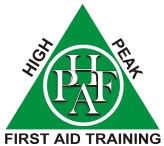There are some details here, but please also return on 4th August as more lessons will be added for Thoracic Trauma – you will need these details for your course.
According to the Faculty of Prehospital Care, the Royal College of Surgeons Edinburgh, chest injuries are difficult to diagnose in a pre-hospital environment and are significant contributors to death. However, the incidence of life-threatening chest injuries are relatively small.
The Trauma Audit Research Network conducted a survey of 183,232 cases of Trauma between 2005-13 and found the following data in relation to chest injuries

You can see that Flail Chest was the most likely to be encountered during those 8 years and Open Pneumothorax the least likely.
Signs and Symptoms
The conscious person is likely to be in pain with an increased respiratory and pulse rate. Signs of shock in varying degrees will be present. To breath effectively, the best position for gas exchange is sat up or lying with the healthy lung down. Some body positions such as sat up may not be possible if a person has severe blood loss resulting in hypovolaemia. Hypovolaemia or low fluid volume will result in a drop in blood pressure, so lying with the healthy lung down may be the best option. Spinal fractures will also limit the choice of body position.




